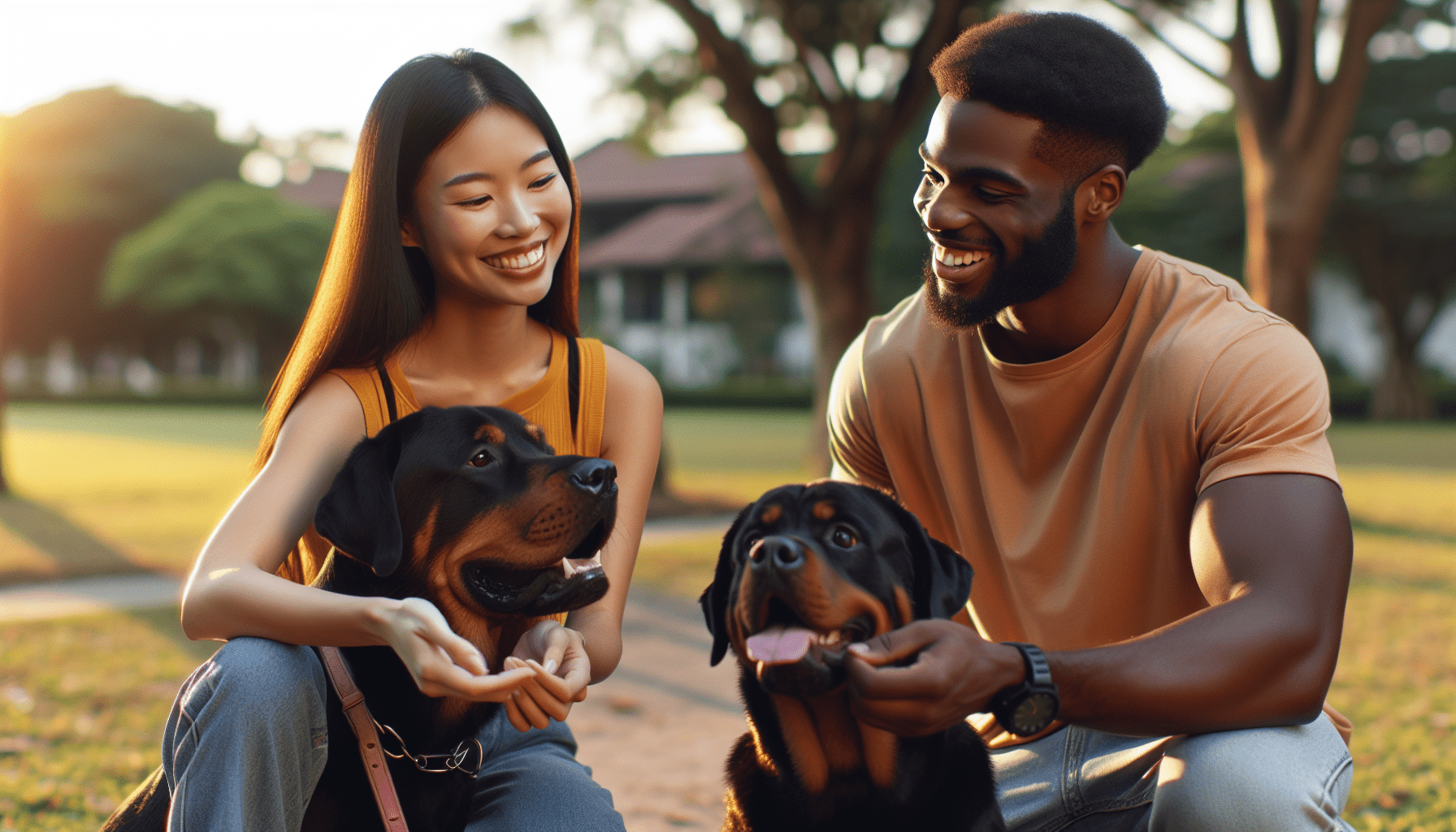In the world of dog ownership, communication plays a crucial role in building a strong bond with your furry companion. Understanding the language of dogs is like unlocking a secret code that allows you to connect with them on a deeper level. From tail wags to barks, dogs are constantly sending signals that convey their emotions and needs. In this article, we explore the intricacies of dog communication and provide you with tips and insights to help you become a master in this art form. So get ready to decode your dog’s messages and enhance your relationship with them like never before.
Understanding Basic Dog Communication
Dogs are incredibly expressive creatures, communicating with us and with each other through a variety of signals. Understanding these signals is key to building a strong bond with your furry friend. Dog communication can be broken down into three main categories: body language, vocalizations, and facial expressions. By paying attention to these cues, you can better understand what your dog is trying to tell you and respond accordingly.
Body Language Signals to Pay Attention to
Tail Wagging
One of the most well-known signals in dog communication is tail wagging. However, contrary to popular belief, a wagging tail does not always mean a dog is happy. The position of the tail is crucial in determining the dog’s emotional state. A tail held high and wagging rapidly indicates a confident and happy dog, while a tail held low and wagging slowly suggests caution or submission.
Ears Position
Another important aspect of body language is the position of a dog’s ears. When a dog’s ears are erect and facing forward, it typically signifies alertness and attentiveness. On the other hand, flattened ears or ears held back against the head often indicate fear or submission. It’s essential to pay attention to these subtle cues to gauge how your dog is feeling in different situations.
Eye Contact
Eye contact is another powerful form of communication between dogs and humans. Just like with people, prolonged eye contact in the canine world can be an indicator of trust and affection. However, it’s important to understand that direct eye contact can also be perceived as a challenge or threat in certain contexts. Dogs may avert their gaze to show submission or may become agitated if they feel threatened. Always be mindful of your dog’s comfort level when engaging in eye contact.

Interpreting Vocalizations
Barking
Barking is one of the most common vocalizations in dogs and can serve various purposes. It can express a range of emotions, including excitement, fear, or even frustration. Paying attention to the pitch, duration, and intensity of your dog’s barks can help you decipher their message. A sharp, high-pitched bark may indicate fear or alarm, while a deep, prolonged bark could signal aggression or a desire to play. Context and accompanying body language can further assist in understanding your dog’s intentions.
Growling
Growling is often misunderstood as a sign of aggression, but it is an essential part of a dog’s communication repertoire. Dogs growl to express discomfort, warning, or even playfulness. It’s crucial to pay attention to the context and accompanying body language when interpreting a growl. A low, continuous growl may indicate aggression or fear, while a higher-pitched growl with a wagging tail might suggest playfulness. It’s essential to never punish a dog for growling, as it is their way of communicating their boundaries.
Howling
Howling is a unique vocalization that is often associated with wolves. However, many domesticated dogs also possess this instinctive behavior. Howling can serve various purposes, such as expressing loneliness, alerting the pack to danger, or even joining in the chorus of other howling dogs. When a dog howls, they are often conveying their emotions, seeking attention, or trying to communicate with others. Pay attention to the frequency and duration of the howling to better understand what your dog is trying to express.
Recognizing Different Facial Expressions
Happy
A happy dog is a joy to be around, and their facial expressions can reflect their joyous state. A dog’s face when they are happy is relaxed, with a slightly opened mouth displaying their tongue. Their eyes may appear bright, and their ears may be slightly perked up. A happy dog often exhibits a relaxed body posture as well, with a loose wagging tail. Taking note of these facial expressions can help you gauge your pup’s contentment and ensure you are providing a positive and fulfilling environment.
Sad
Dogs can experience sadness and display facial expressions that mirror their emotions. A sad dog may have drooping ears, a downward gaze, and a closed mouth. Their eyebrows may appear furrowed, and their overall body language can seem passive or lethargic. Understanding when your dog is feeling down is crucial to providing them with the necessary support and care. Spending quality time, engaging in activities they enjoy, and providing a safe and loving environment can help alleviate their sadness.
Anxious
Anxiety in dogs can manifest through various facial expressions. An anxious dog may have tightly closed lips, wide eyes, and a tense body posture. Their ears may be flattened against their head, and they may exhibit signs of restlessness, such as pacing or trembling. Identifying anxiety in your dog is crucial, as it can impact their overall well-being. Providing a calm and secure environment, implementing anxiety-reducing techniques, and seeking professional help if needed can help alleviate their anxiety and improve their quality of life.

Non-Verbal Communication with Dogs
Using Hand Signals
Dogs are incredibly intuitive when it comes to visual cues, making hand signals an effective means of communication. By pairing verbal commands with specific hand gestures, you can enhance your dog’s understanding and response. For example, raising your hand with palm facing forward can signal your dog to stop, while lowering your hand parallel to the ground can indicate that they should lie down. Consistency is key when using hand signals, and with practice, your dog will learn to respond to your non-verbal cues effortlessly.
Posture and Stance
Your own posture and stance can also communicate a great deal to your dog. Standing tall and assertive can convey confidence and authority, while crouching or slouching may indicate submission or fear. Dogs are incredibly attuned to the energy and body language of their human companions, so being aware of your own posture can help establish clear communication. Maintaining an upright posture and projecting calmness can help your dog feel secure and understand your cues more effectively.
Gestures
In addition to hand signals and posture, gestures such as pointing or nodding can also be helpful in communicating with your dog. Dogs are adept at picking up on these subtle gestures and can quickly understand what you are indicating. For example, pointing towards a toy can signal that you want them to fetch it, while nodding your head can indicate approval or agreement. Incorporating these gestures into your communication with your dog can strengthen your bond and improve overall understanding.
Improving Your Communication Skills
Building Trust
Building trust is crucial in any relationship, and the bond between a dog and their human is no exception. Trust forms the foundation of effective communication, as it allows for open and honest expression without fear or anxiety. To build trust with your dog, ensure a consistent routine, provide positive reinforcement, and show them unconditional love and support. Trust takes time to develop, but the effort is well worth it for a strong and lasting connection with your furry friend.
Training and Consistency
Training is an essential part of effective dog communication. By teaching your dog basic obedience commands, you establish a common language that helps them understand your expectations. Consistency is key in training, as it helps dogs learn and reinforces their understanding of specific commands. Use positive reinforcement techniques, such as treats and praise, to reward desired behaviors and motivate your dog during training sessions. By consistently reinforcing desired behaviors, you can improve communication and create a well-behaved and responsive canine companion.
Positive Reinforcement
Positive reinforcement is a powerful tool in dog training and communication. By rewarding desired behaviors, you promote a positive association and motivation in your dog. This can include treats, praise, or playtime, depending on what motivates your furry friend. Positive reinforcement helps strengthen the bond between you and your dog and encourages them to repeat behaviors that you find desirable. By focusing on positive reinforcement rather than punishment, you create a more harmonious and trusting relationship with your canine companion.
Understanding Dog Packs and Hierarchy
Hierarchy in Packs
Dogs are pack animals, and understanding their pack dynamics can help you better understand their behavior and communication. Packs have a hierarchical structure, with leaders at the top and followers below them. In a household with multiple dogs, hierarchy may also influence their interactions and communication. Understanding the pack dynamics in your household can help you manage and prevent potential conflicts, ensuring a peaceful coexistence among your furry family members.
Alpha and Dominance
The concept of alpha dogs and dominance can be a contentious topic in dog training and communication. While the notion of an alpha dog has been challenged by some experts, it is still important to recognize that dogs have a natural inclination towards establishing order and understanding their place in the hierarchy. Being a calm, confident, and consistent leader can help establish yourself as the “alpha” in your dog’s eyes and foster a sense of security and trust.
Social Structure
Dogs are social animals, and their social structure plays a significant role in their communication. Within a pack or a group of dogs, they establish social order through various communication cues and body language. Recognizing and respecting these social cues can help prevent conflicts and create a harmonious environment. By understanding your dog’s need for social interaction and providing appropriate outlets, such as playdates with other friendly dogs, you can help fulfill their social needs and improve their overall well-being.
Reading Dog Social Cues
Play Behavior
Play behavior is an essential form of social interaction among dogs. When dogs engage in play, they communicate with each other through body language and vocalizations. Play bows, where a dog lowers their front body while keeping their hindquarters up, is a common play behavior signal. A wagging tail, loose body movements, and bouncy movements are also indicators of playful intent. Understanding and recognizing these cues can help you ensure that your dog’s play experiences are positive and safe.
Aggression Signals
While we never want to see our dogs exhibit aggression, it’s essential to recognize the signs of aggression to prevent potential incidents. Aggression signals can include stiffening of the body, raised hackles, growling, bared teeth, and a fixed stare. It’s crucial to intervene and address the situation calmly and safely if you notice these signs of aggression. Identifying and addressing the triggers of aggression, seeking professional help if needed, and implementing appropriate behavior modification techniques can help manage aggression and promote a more peaceful coexistence.
Submission and Appeasement
Dogs also communicate submission and appeasement behaviors to avoid conflicts and establish harmony within the pack. These behaviors include crouching or lowering of the body, tucking the tail between the legs, licking of the lips, and averting the gaze. Recognizing these signals is crucial to understand when a dog is uncomfortable or trying to defuse a potentially tense situation. Providing a safe and secure environment, avoiding confrontations, and addressing any underlying issues can help reduce submissive and appeasement behaviors.
Recognizing Dog’s Emotional State
Fear and Anxiety
Fear and anxiety can significantly impact a dog’s emotional well-being and communication. Signs of fear and anxiety in dogs can include trembling, panting, excessive drooling, pacing, and attempts to escape or hide. Understanding these signs can help you identify when your dog is feeling anxious or fearful and take appropriate action. Providing a calm and secure environment, implementing anxiety-reducing techniques, and seeking professional help if needed can help alleviate fear and anxiety in your dog.
Happiness and Contentment
A happy and content dog will display various signs of well-being. These may include relaxed body posture, a gentle wagging tail, bright eyes, and a playful demeanor. Recognizing these signs helps you gauge your dog’s emotional state and ensure they are living a fulfilling and joyful life. Engaging in activities they enjoy, spending quality time together, and providing a loving and enriched environment are all ways to promote happiness and contentment in your canine companion.
Stress and Frustration
Just like humans, dogs can experience stress and frustration. Signs of stress and frustration can include licking or biting of paws, excessive barking, panting, pacing, whining, and destructive behavior. Recognizing these signs is crucial to address the underlying causes and alleviate their stress. Identifying triggers, providing mental and physical stimulation, and creating a calm and predictable routine can help reduce stress and frustration in your dog’s life.
Tips for Effective Dog Communication
Be Calm and Patient
Maintaining a calm and patient demeanor is crucial in effective dog communication. Dogs are highly attuned to their human companion’s energy and can pick up on any tension or stress. By projecting a calm and relaxed demeanor, you create a safe and secure environment for your dog to express themselves and communicate openly. Take the time to breathe and remain patient, even in challenging situations, to promote a positive and trusting bond with your furry friend.
Observe and Listen
Effective dog communication relies on the ability to observe and listen attentively to your dog’s cues. Take the time to watch their body language, listen to their vocalizations, and pay attention to their overall behavior. By being present in the moment and actively engaging with your dog, you can pick up on subtle cues and better understand their needs and emotions. This attentiveness enables you to respond appropriately and strengthen your communication skills.
Practice Empathy
Empathy is a powerful tool in any relationship, including the one with your dog. Putting yourself in your dog’s paws and trying to see the world from their perspective can help you better understand their behavior and communication. By considering their needs, emotions, and individual personality, you can tailor your communication approach to their specific requirements. This empathy fosters a deeper connection and allows you to provide the care and support your dog truly needs.
Mastering the art of dog communication requires dedication, patience, and a willingness to deepen your understanding of these incredible creatures. By paying attention to their body language, vocalizations, and facial expressions, and by practicing effective non-verbal communication techniques, you can establish a strong bond with your furry friend. With time and effort, you will become fluent in the language of dogs, enabling you to communicate effectively and build a lifelong companionship based on trust and mutual understanding.

